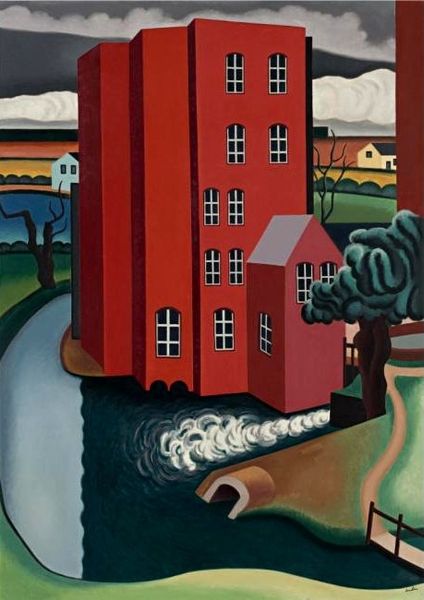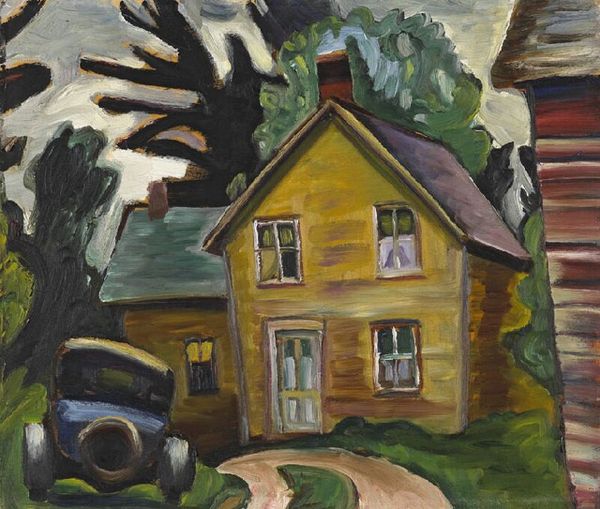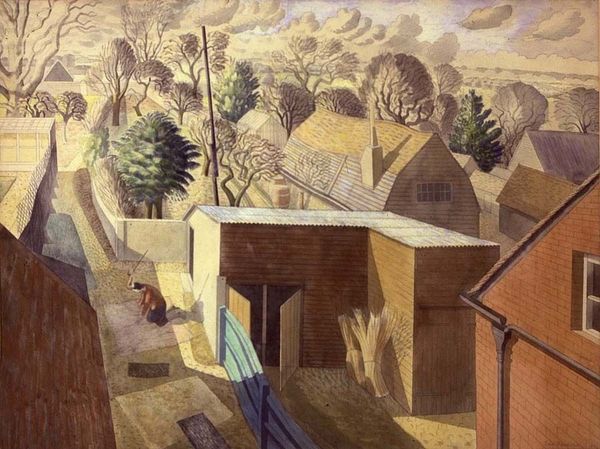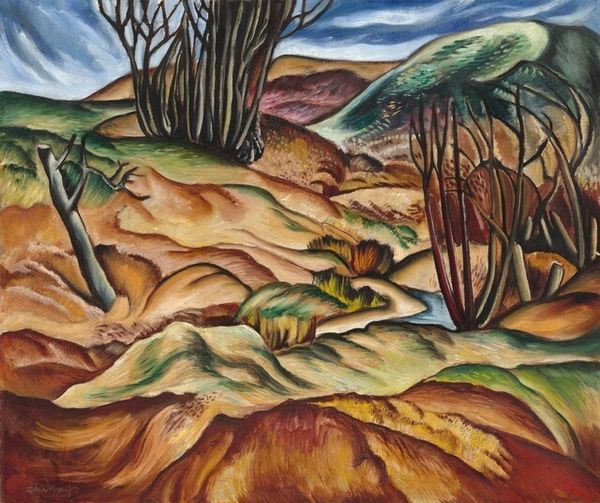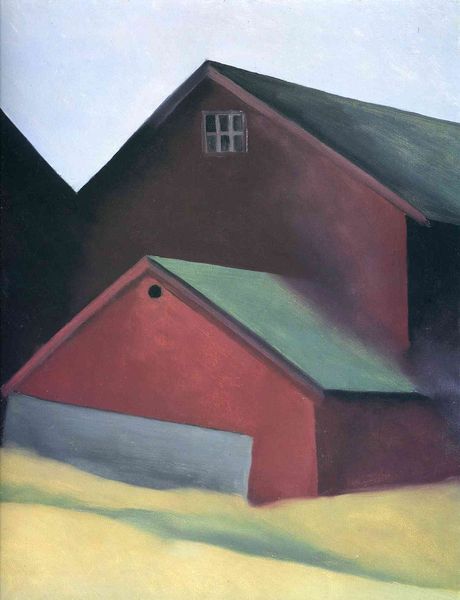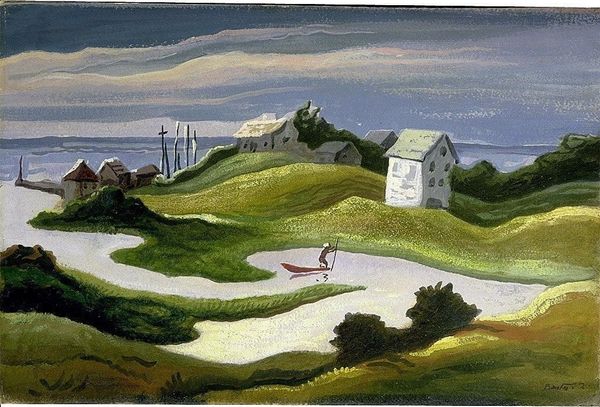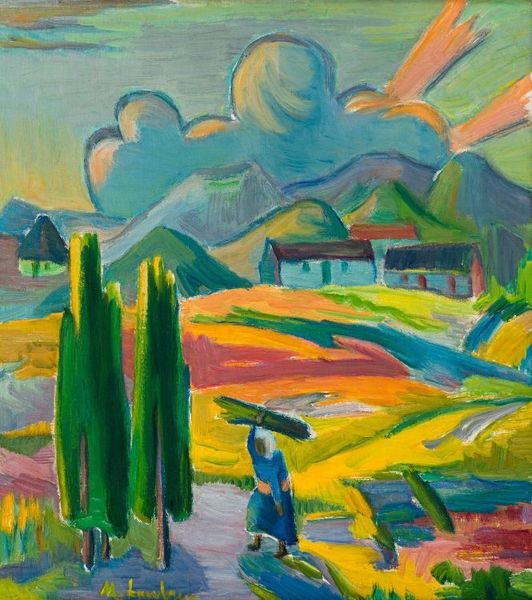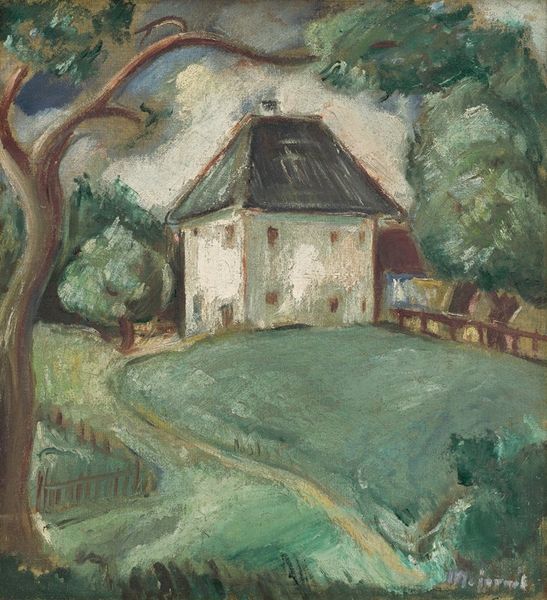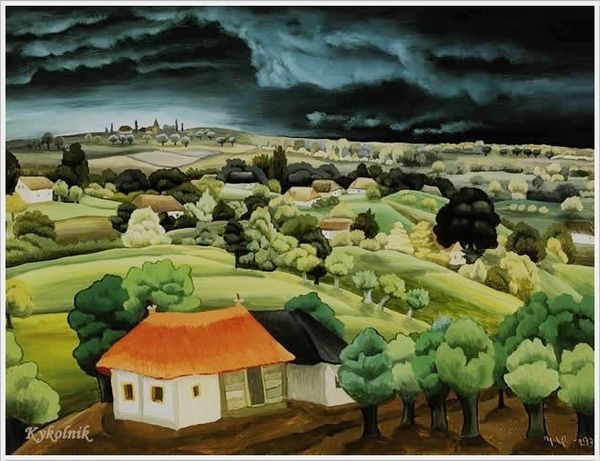
painting, oil-paint
#
painting
#
oil-paint
#
landscape
#
oil painting
#
regionalism
Dimensions: painted surface: 55.25 × 59.69 cm (21 3/4 × 23 1/2 in.) overall: 56.2 × 61.12 cm (22 1/8 × 24 1/16 in.) framed: 65.41 × 70.49 × 6.35 cm (25 3/4 × 27 3/4 × 2 1/2 in.)
Copyright: National Gallery of Art: CC0 1.0
Curator: I find the swirling forms and slightly unnatural palette quite striking; there’s a tension between representation and stylized abstraction at play. Editor: Indeed. We’re looking at Thomas Hart Benton’s “Martha's Vineyard,” circa 1925, rendered in oil paint. For me, what jumps out is the evident physicality of the oil paint itself. You can practically feel the artist manipulating the material to sculpt the landscape. Curator: Precisely. The handling of the paint, particularly in the rolling hills and the swirling clouds, feels almost sculptural, underscoring the materiality of the landscape itself. One thinks of the artist as a laborer wrestling with earth. Editor: And that labor extends beyond the artist's studio, doesn't it? The subject matter—a somewhat domesticated landscape—hints at human interaction, the mark of inhabitants on the land. Even the telephone pole feels like a commentary on how industry shapes our engagement with nature. Curator: True, the telephone pole and structures denote the influence of infrastructure and the impact of development upon rural settings. But formally, consider the sinuous line that carries your eye up and over the hill – the curving path contrasting the angular house; it presents visual dynamism! Editor: Yes, it is dynamic. But consider who exactly gets to retreat to these settings! Regionalism in art, as often displayed by Benton and his peers, serves to reinforce myths of ideal American life in times of crisis, and also masks the realities of marginalized groups outside such places of economic privilege. Curator: That is important context. It’s easy to be seduced by the pastoral ideal that’s rendered on the canvas, however this idyllic visualization requires critical analysis beyond a solely visual reading. Editor: Agreed. Considering it through the lens of material production and social messaging unveils layers that pure aesthetics might obscure. Thanks, I see this oil painting more critically, as Benton surely aimed to be viewed himself. Curator: And for me, your material reading brings an important added understanding. Now that I've spent time considering these factors, I too notice much more detail to absorb!
Comments
No comments
Be the first to comment and join the conversation on the ultimate creative platform.

